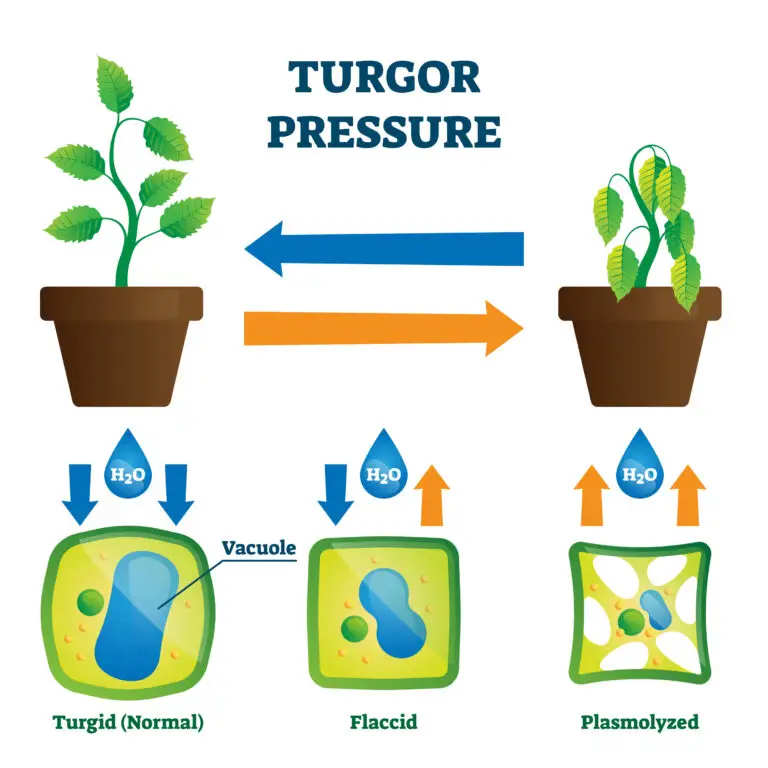Turgor Pressure

Table of Contents
What is Turgor Pressure?
Turgor pressure is the pressure exerted by the fluid (usually water) inside the central vacuole of a plant cell against the cell wall. It is crucial in maintaining plant cells’ integrity and rigidity. Turgor pressure results from the osmotic movement of water into the cell, causing the cell to swell and press against the cell wall.
Components Involved in Turgor Pressure
Central Vacuole
Plant cells contain a large central vacuole, a membrane-bound organelle filled with a solution called cell sap. The vacuole plays a central role in regulating turgor pressure.
Cell Wall
The cell wall is a rigid outer layer surrounding plant cells. It provides structural support and shape to the cell. Turgor pressure is essential for maintaining plant cells’ turgidity (firmness), preventing wilting and collapse.
Osmosis
Turgor pressure is generated through osmosis, which involves the movement of water across a selectively permeable membrane (in this case, the cell membrane) from an area of lower solute concentration to an area of higher solute concentration.
Steps in the Generation of Turgor Pressure
Water Uptake
Plant cells take up water from the surrounding environment through osmosis. This process is driven by the concentration gradient of solutes inside and outside the cell.
Central Vacuole Expansion
As water enters the cell, it accumulates in the central vacuole. The vacuole expands, exerting pressure on the cell contents and the cell membrane.
Cell Wall Expansion
The pressure the central vacuole exerts causes the cell membrane to push against the cell wall. The rigid cell wall resists expansion to a certain extent, leading to the development of turgor pressure.
Turgidity and Structural Support
Turgor pressure provides the cell with turgidity, keeping it firm and preventing it from collapsing. Turgor pressure also contributes to the structural support of non-woody plant tissues.